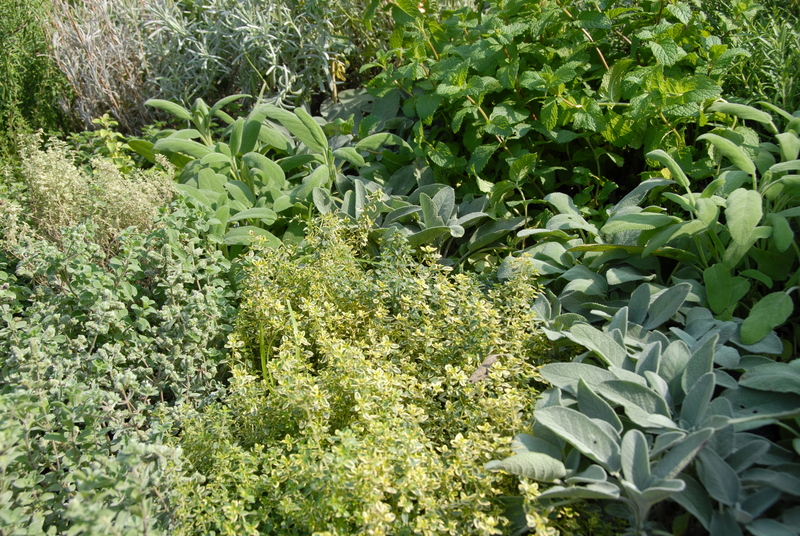Vertical Gardening: Bringing Nature to New Heights
Posted on 05/10/2025
Vertical Gardening: Bringing Nature to New Heights
In today's urbanized world, where green spaces are continually shrinking and maximizing every inch of our environment is crucial, vertical gardening emerges as a game-changer. Rather than growing your garden horizontally on the ground, vertical gardens soar upwards, redefining how we integrate plants into our homes, offices, and cities. This comprehensive guide explores the essentials of vertical gardening, from its remarkable benefits and popular systems to creative ideas, installation tips, plant choices, and ongoing care. Whether you're a seasoned horticulturist or a beginner with limited space, vertical gardening can elevate your love for nature--literally!
What is Vertical Gardening?
Vertical gardening is the practice of growing plants on vertically suspended panels, walls, trellises, or frames, using soil, hydroponics, or other innovative support systems. Also called living walls or green walls, these gardens transform underutilized vertical surfaces into lush, vibrant displays of foliage and blooms. From balcony railings to commercial skyscrapers, vertical gardens inject life and color into every conceivable space.
The Evolution of Vertical Gardens
While ancient civilizations like the Babylonians famously built the Hanging Gardens, the modern concept of vertical gardening gained momentum with architect Patrick Blanc's botanical installations in the 1980s. Since then, technology, creativity, and a growing eco-consciousness have driven the popularity of vertical gardens across urban and suburban areas alike.

Why Choose Vertical Gardening?
Vertical gardening offers distinct advantages compared to traditional horizontal planting:
- Optimal Space Utilization: Perfect for small balconies, patios, or indoor spaces, vertical planter systems let you grow more with less ground area.
- Enhanced Aesthetics: Living walls create instant wow-factor, making any environment more beautiful and dynamic.
- Improved Air Quality: Vertical gardens act as natural air filters, removing toxins and boosting oxygen levels indoors and outdoors.
- Thermal Insulation: Green walls help regulate building temperatures, reducing energy costs for heating and cooling.
- Urban Biodiversity: These gardens provide essential habitats and feeding grounds for pollinators and birds in concrete jungles.
- Noise Reduction: Thick layers of vegetation absorb sound, dampening urban noise pollution.
- Food Production: You can grow fresh herbs, veggies, and fruits, enabling sustainable, hyper-local food sources.
- Psychological Benefits: Being surrounded by greenery lowers stress, improves mood, and enhances productivity and creativity.
Types of Vertical Gardening Systems
There are many creative ways to bring vertical gardening to life. Below are some of the most popular and effective approaches:
1. Living Walls
- Hydroponic Living Walls: These self-contained systems use a frame or panel filled with non-soil substrates (like felt or foam) and an automated watering system. Suitable for indoor installations and large outdoor facades.
- Soil-based Green Walls: Vertical planters are filled with soil and stacked or fixed directly to walls. Perfect for outdoor gardens and patios.
2. Vertical Planter Pots and Stackable Units
- Modular Planters: Interlocking pots and trays that can be arranged on shelves, trellises, or custom supports.
- Recycled and Upcycled Systems: Use repurposed pallets, shoe organizers, rain gutters, or old pipes for a budget- and eco-friendly solution.
3. Trellises and Climbing Plant Supports
- Trellises and Lattices: Ideal for flowering vines, veggies, or climbing fruits. Install outdoors or on sunny window walls.
- Espalier Systems: Trees or shrubs are expertly pruned and trained along vertical surfaces for ornamental or productive use.
4. Hanging Baskets and Green Screens
- Hanging Planters: Suspend multiple pots or baskets from ceilings, beams, or balcony railings.
- Freestanding Green Panels: Moveable, modular green screens offer flexibility and are perfect for renters.
How to Start Your Own Vertical Garden: Step-by-Step Guide
Ready to elevate your green thumb? Here's how to bring nature to new heights in your home or yard:
Step 1: Assess Your Space
- Location: Indoor or outdoor? Wall, balcony, fence, or something else? Consider sunlight, moisture, and accessibility.
- Size: Measure your available vertical surface--height and width.
Step 2: Choose Your System
- For beginners, opt for easy solutions like pocket planters or stackable pots.
- For ambitious projects, try living wall panels or hydroponic systems.
Step 3: Decide on Plants
- Sun-loving plants if your wall gets 6+ hours of sunlight.
- Shade-tolerant options for dimmer spots.
- Trailing and cascading plants create a lush, dramatic effect.
- Edibles: Herbs, salad greens, strawberries, and dwarf tomatoes work well.
- Ornamentals: Ferns, succulents, pothos, philodendrons, petunias, and more.
Step 4: Prepare the Surface and Install
- Attach your system securely using screws, anchors, or hooks.
- Ensure waterproofing and drainage for wall protection, especially for indoor or wooden surfaces.
- Fill planters with quality potting mix, ensuring good aeration and water retention.
Step 5: Plant, Water, and Maintain
- Arrange plants starting from the bottom, working upwards for balance and coverage.
- Water carefully--vertical gardens may lose moisture faster.
- Fertilize with a diluted, balanced liquid feed every two weeks.
- Prune and trim as needed to maintain shape and vigor.
Creative Vertical Gardening Ideas for Indoors and Outdoors
- Pallet Planter Wall: Repurpose wood pallets into a DIY vertical planter. Paint or stain for added style, and tuck herbs or succulents between the slats.
- Hanging Pocket Garden: Fabric shoe organizers or felt pockets are perfect for small plants. Hang on doors, fences, or balcony walls.
- Succulent Frame: Create a living art piece by planting succulents inside a shadow box-frame, perfect for bright indoor walls.
- Bottle Tower: Stack empty plastic bottles, cut side openings, and fill with soil--great for kids and ultra-budget gardeners.
- Trellis for Edible Vines: Train cucumbers, beans, or flowering vines up an A-frame or flat trellis in your yard or balcony.
- Herb Spiral: Spiral a tower of rocks or bricks and plant herbs in the crevices for a whimsical, space-saving garden.
- Moss Wall Panel: Install preserved moss or live moss panels indoors for air purification and zen vibes.
- Gutter Planters: Mount old rain gutters horizontally or vertically to a fence or wall, and fill them with leafy greens or flowers.
Best Plants For Vertical Gardening
Selecting the right plants is the key to thriving vertical gardens. Consider the light, climate, and watering needs:
Great Plant Choices for Vertical Gardens Include:
- Herbs: Basil, oregano, thyme, parsley, mint, coriander
- Salad Greens: Lettuce, spinach, arugula, kale
- Small Fruits: Strawberries, dwarf tomatoes, bush beans, chili peppers
- Flowers: Petunias, begonias, nasturtiums, pansies, lobelia
- Foliage Plants: Pothos, peperomia, English ivy, philodendrons, ferns
- Succulents: Sedum, echeveria, crassula, hens-and-chicks
- Cascading Vines: Tradescantia, string of pearls, creeping Jenny, sweet potato vine
Pro tip: Choose plants with similar water and light requirements for the same garden wall to make care easier.
Vertical Garden Maintenance: Tips for Success
- Daily Attention: Check for dry soil or wilting, especially in summer or with indoor heating.
- Irrigation System: For large living walls, invest in drip or wicking systems for consistent moisture.
- Feeding: Monthly slow-release fertilizer or bi-weekly liquid feeds keep plants lush.
- Pruning: Regularly trim dead or overgrown leaves for aesthetics and plant health.
- Pest Management: Inspect for pests and remove by hand or spray with organic solutions.
- Rotation & Replacement: Refresh your vertical garden with seasonal changes or swap out struggling plants.
Challenges of Vertical Gardening and How to Overcome Them
While vertical gardening offers numerous advantages, it's important to address common obstacles:
- Water Runoff and Drainage: Prevent water from pooling at the bottom by using well-draining soil and sloped panels.
- Structural Support: Ensure your vertical system is firmly attached to withstand wind or plant weight.
- Sunlight Distribution: Lower sections may get less light; choose shade-tolerant plants for bottom tiers.
- Initial Setup Cost: DIY solutions and upcycled materials can help reduce expenses.
- Maintenance Commitment: Regular watering and care are critical to keeping your living wall healthy and attractive.
Vertical Gardens in Urban Architecture & Commercial Spaces
The dramatic impact of vertical green walls goes beyond private homes and apartments. They are increasingly featured in:
- Office buildings and corporate lobbies for improved aesthetics, insulation, and employee wellbeing.
- Retail stores and hotels to attract customers and create unique brand experiences.
- Public parks and city streets to fight air pollution and cool urban heat islands.
- Restaurants and cafes for onsite herb and produce supply, and a refreshing dining atmosphere.
- Schools and hospitals where exposure to greenery accelerates healing and learning outcomes.
Iconic examples include the lush vertical gardens at One Central Park (Australia), Musee du quai Branly (France), and the Cake & Coffee Tower (Singapore).

Future of Vertical Gardening
As populations continue urbanizing and sustainability becomes ever more pressing, the future of vertical gardening looks promising. Smart irrigation, intelligent lighting, and modular, automated systems are making it easier for anyone to grow up--even on the smallest scale. Vertical gardens will play a vital role in building greener, healthier, and more resilient cities for generations to come.
Conclusion: Elevate Your Space with Vertical Gardening
Vertical gardening transcends mere aesthetics--it's a bold statement about the importance of greenspaces in our modern lives. By reimagining unused walls and vertical surfaces, anyone can enjoy the rewards of gardening, regardless of space. Whether you're cultivating herbs in your kitchen, creating a verdant balcony oasis, or planning a striking living wall, vertical gardening brings nature to new heights--literally and figuratively.
Ready to get started? Embrace the world of vertical gardens today and experience the transformative power of greenery one tier at a time!

